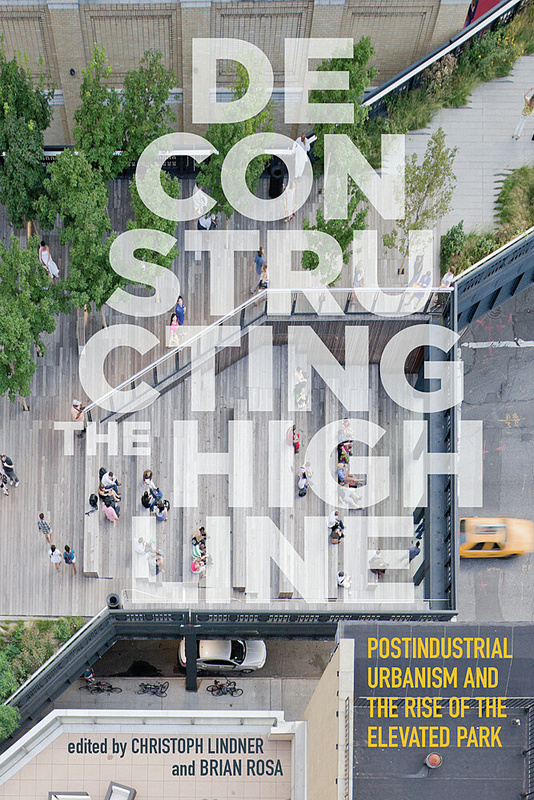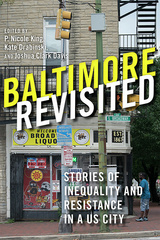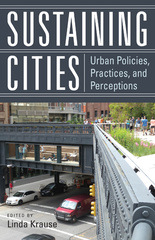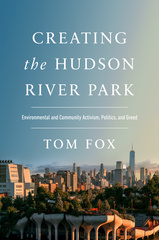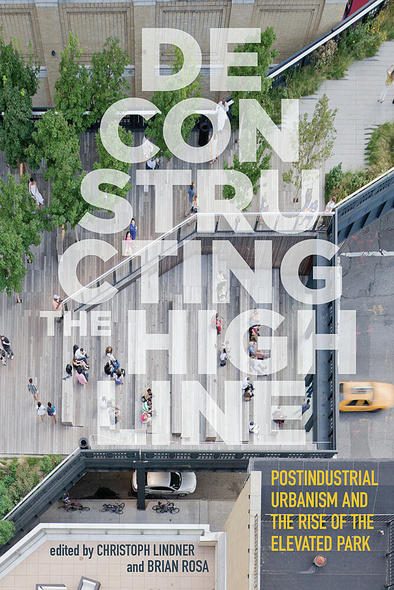
232 pages, 6 x 9
28 photographs, 2 tables
Hardcover
Release Date:09 May 2017
ISBN:9780813576466
Deconstructing the High Line
Postindustrial Urbanism and the Rise of the Elevated Park
Edited by Christoph Lindner and Brian Rosa
Rutgers University Press
2017 Choice Outstanding Academic Title
The High Line, an innovative promenade created on a disused elevated railway in Manhattan, is one of the world’s most iconic new urban landmarks. Since the opening of its first section in 2009, this unique greenway has exceeded all expectations in terms of attracting visitors, investment, and property development to Manhattan’s West Side. Frequently celebrated as a monument to community-led activism, adaptive re-use of urban infrastructure, and innovative ecological design, the High Line is being used as a model for numerous urban redevelopment plans proliferating worldwide.
Deconstructing the High Line is the first book to analyze the High Line from multiple perspectives, critically assessing its aesthetic, economic, ecological, symbolic, and social impacts. Including several essays by planners and architects directly involved in the High Line’s design, this volume also brings together a diverse range of scholars from the fields of urban studies, geography, anthropology, sociology, and cultural studies. Together, they offer insights into the project’s remarkable success, while also giving serious consideration to the critical charge that the High Line is “Disney World on the Hudson,” a project that has merely greened, sanitized, and gentrified an urban neighborhood while displacing longstanding residents and businesses.
Deconstructing the High Line is not just for New Yorkers, but for anyone interested in larger issues of public space, neoliberal redevelopment, creative design practice, and urban renewal.
The High Line, an innovative promenade created on a disused elevated railway in Manhattan, is one of the world’s most iconic new urban landmarks. Since the opening of its first section in 2009, this unique greenway has exceeded all expectations in terms of attracting visitors, investment, and property development to Manhattan’s West Side. Frequently celebrated as a monument to community-led activism, adaptive re-use of urban infrastructure, and innovative ecological design, the High Line is being used as a model for numerous urban redevelopment plans proliferating worldwide.
Deconstructing the High Line is the first book to analyze the High Line from multiple perspectives, critically assessing its aesthetic, economic, ecological, symbolic, and social impacts. Including several essays by planners and architects directly involved in the High Line’s design, this volume also brings together a diverse range of scholars from the fields of urban studies, geography, anthropology, sociology, and cultural studies. Together, they offer insights into the project’s remarkable success, while also giving serious consideration to the critical charge that the High Line is “Disney World on the Hudson,” a project that has merely greened, sanitized, and gentrified an urban neighborhood while displacing longstanding residents and businesses.
Deconstructing the High Line is not just for New Yorkers, but for anyone interested in larger issues of public space, neoliberal redevelopment, creative design practice, and urban renewal.
Friends of the High Line has also been trying to make up for lost time, launching arts and jobs initiatives with residents of nearby public housing. Danya Sherman, former director of public programs, education, and community engagement for Friends of the High Line, details these efforts in her contribution to Deconstructing the High Line, a series of essays by academics, architects, and those involved in the making of the elevated park... Before the High Line proffered progressivism through its programming, other contributors to the book note, it cast cold, hard capitalism in concrete. In recent years, mountains of ink have been spilled about how the ills facing contemporary New York and cities around the globe have been exacerbated by the High Line's complicity ... Other books about the High Line either don't engage these critiques or only do so through the eyes of Hammond and Friends of the High Line co-founder Josua David.
Deconstructing the High Line is a timely, insightful, comprehensive, and interdisciplinary study that dares to critically examine the widely celebrated High Line from a variety of social, political, and cultural perspectives.
At last! A smart book on the High Line that places it critically in both a local and a global frame! Since the High Line has quickly become a global pace maker among local place makers, this critical, multidimensional view is absolutely necessary to understand the political forces and aesthetic displacements that are reshaping our cities and our lives.
This book teaches us that an all-inclusive approach from the point of view of urban theory is needed to better understand the effects of projects of urban, social and economic 'improvement.''
CHRISTOPH LINDNER is a professor and dean of architecture and allied arts at the University of Oregon in Eugene. His recent books include Imagining New York City: Literature, Urbanism, and the Visual Arts, as well as the edited volumes Global Garbage, Inert Cities, and Paris-Amsterdam Underground.
BRIAN ROSA is an assistant professor of urban studies (Queens College) and geography (The Graduate Center) at the City University of New York.
BRIAN ROSA is an assistant professor of urban studies (Queens College) and geography (The Graduate Center) at the City University of New York.
List of Figures and Tables
Acknowledgments
High Line Timeline
Introduction: From Elevated Railway to Urban Park
Brian Rosa and Christoph Lindner
Part I Envisioning the High Line
Chapter 1 Hunt’s Haunts
James Corner
Chapter 2 Community Engagement, Equity, and the High Line
Danya Sherman
Chapter 3 Loving the High Line: Infrastructure, Architecture, and the Politics of Space in the Mediated City
Alan Smart
Part II Gentrification and the Neoliberal City
Chapter 4 Parks for Profit: Public Space and Inequality in New York City
Kevin Loughran
Chapter 5 Parks (In)Equity
Julian Brash
Chapter 6 Retro-Walking New York
Christoph Lindner
Part III Urban Political Ecologies
Chapter 7 The Garden on the Machine
Tom Baker
Chapter 8 The Urban Sustainability Fix and the Rise of the Conservancy Park
Phil Birge-Liberman
Chapter 9 Of Success and Succession: A Queer Urban Ecology of the High Line
Darren J. Patrick
Part IV The High Line Effect
Chapter 10 A High Line for Queens: Celebrating Diversity or Displacing It?
Scott Larson
Chapter 11 Programming Difference on Rotterdam’s Hofbogen
Daan Wesselman
Chapter 12 Public Space and Terrain Vague on São Paulo’s Minhocão: The High Line in Translation
Nate Millington
Bibliography
Notes on Contributors
Index
Acknowledgments
High Line Timeline
Introduction: From Elevated Railway to Urban Park
Brian Rosa and Christoph Lindner
Part I Envisioning the High Line
Chapter 1 Hunt’s Haunts
James Corner
Chapter 2 Community Engagement, Equity, and the High Line
Danya Sherman
Chapter 3 Loving the High Line: Infrastructure, Architecture, and the Politics of Space in the Mediated City
Alan Smart
Part II Gentrification and the Neoliberal City
Chapter 4 Parks for Profit: Public Space and Inequality in New York City
Kevin Loughran
Chapter 5 Parks (In)Equity
Julian Brash
Chapter 6 Retro-Walking New York
Christoph Lindner
Part III Urban Political Ecologies
Chapter 7 The Garden on the Machine
Tom Baker
Chapter 8 The Urban Sustainability Fix and the Rise of the Conservancy Park
Phil Birge-Liberman
Chapter 9 Of Success and Succession: A Queer Urban Ecology of the High Line
Darren J. Patrick
Part IV The High Line Effect
Chapter 10 A High Line for Queens: Celebrating Diversity or Displacing It?
Scott Larson
Chapter 11 Programming Difference on Rotterdam’s Hofbogen
Daan Wesselman
Chapter 12 Public Space and Terrain Vague on São Paulo’s Minhocão: The High Line in Translation
Nate Millington
Bibliography
Notes on Contributors
Index

